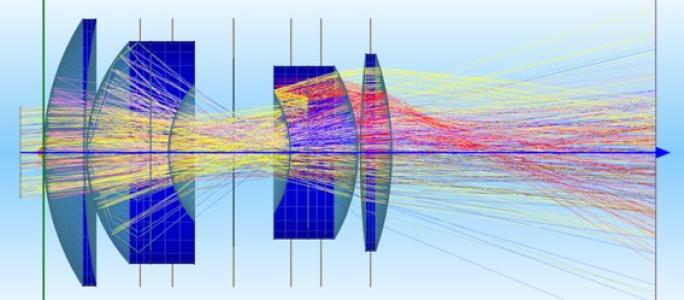Software for System-Level Analysis of Space Optical Instruments

The objective of the activity is to develop a differential ray tracing software for performing end-to-end optical instrument performance analysis and validation of its differential ray tracing engine in comparison to experimental tasks.
For the last few decades geometrical ray tracing method has been the backbone of optical simulations for various optical industries including space applications. The industries have implemented innovative methods such as importance sampling for improving straylight analysis and coherent beam propagation for modelling beam diffraction effects. Also the optical ray tracers have implemented file interchanges between optical CAD and mechanical CAD platforms. However, all of these developments have its inherent mathematical limitations to accurately model instruments performance where the background noise is too sensitive. Also in order to perform optical performance on deformed surfaces due to thermal and structural analysis, the users need to use multiple programs, thus increasing time consumption due to complex file exchange schemes and reducing the accuracy of the surface profiles. Such issues becomes significant mission failure risks for high performance space optical instruments. Moreover, all the new developments of geometrical ray tracing has been focused towards increasing the number of rays to be traced without resolving its inherent issue of under sampling.
Recently, the successfully completed GSTP De-risk activity has shown critical proof of concept for basic differential ray tracing method. However, this present development has several limitation at its current capabilities and cannot be used as it needs significant mathematical and computational development in order to address the requirements mentioned above. As part of advance deformed optical surface analysis, this software is also expected to design, optimize and analyse freeform surfaces using differential ray tracing.
Some of the direct benefits of this activity would be of highly accurate Structural-Thermal-Opto-Mechanical analysis and complete instrument performance analysis with significantly lower amount of computational time as well as computational resources. Thus increasing reliable and multiple design iterations for time critical decision making. A European entity would also provide significant advantage over having access to debug the mathematical algorithm correctness, which has been a serious limitation of working with the non European solution providers in this field.
The final commercial product would be positioned uniquely to provide complete optical performance analysis irrespective of the optical applications giving its access to wider spectrum of industries with virtually non-existing competition.
It is planned to develop and integrate different mathematical modules in the software tool, which can be verifiable for design and experimental test cases. In particular, it is proposed to do the following tasks:
Review of requirements of typical reference instrumentation for design and experimental test cases;
Review requirements for the software architecture for the advance modelling;
Continued development of the current differential ray tracing tool, along with new physics modules for advance straylight analysis, grating, polarisation, freeform surfaces, total instrument MTF-SNR and parallel computing;
Develop a ray tracing algorithms to work with NASTRAN mesh files;
Perform design and experimental verification of the new Software.
